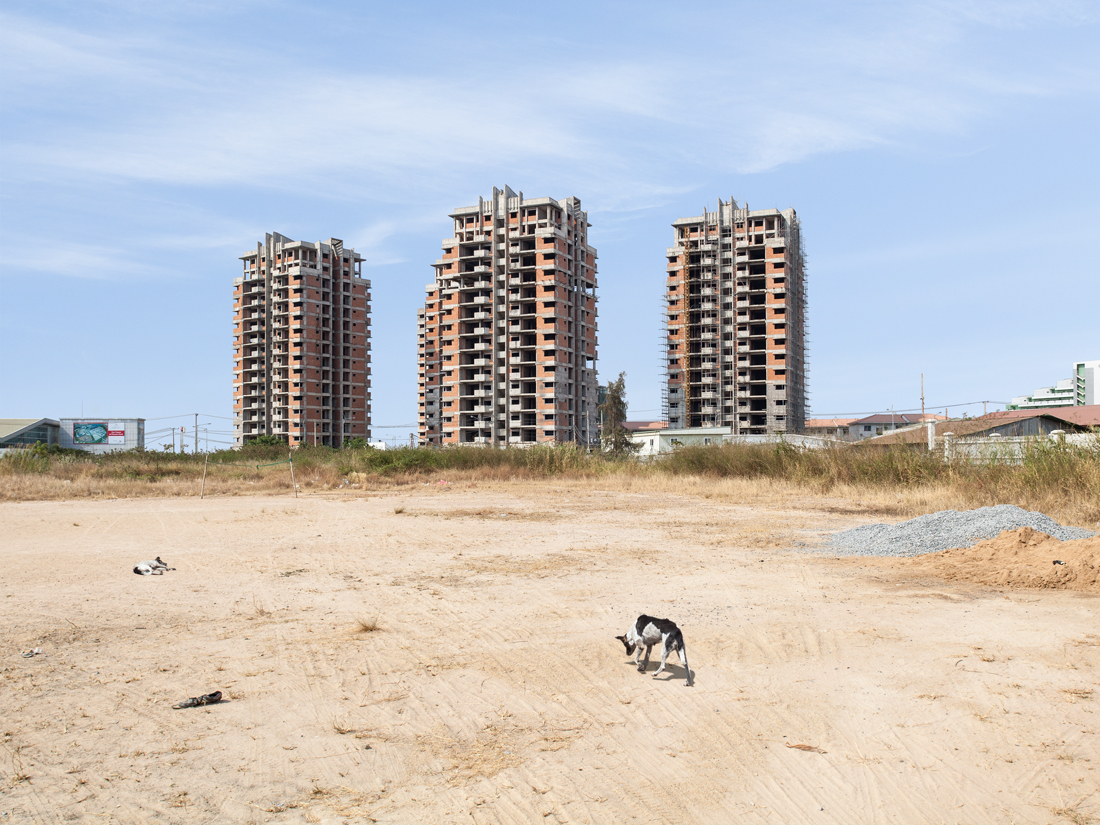City - NOMINEE: Alban Lécuyer
Alban Lécuyer
The Grand Opening of Phnom Penh
Support this photographer - share this work on Facebook.
Phnom Penh is a unique example of our times of a capital that was almost entirely stripped of its population. Buildings were abandoned and traffic prohibited, as well as schools and public spaces being converted into farmland: from 1975 to 1979, the Khmer Rouge regime advocated domination over the “new people” by peasants, campaigns in a city regarded decadent and corrupted by the West, and attempted to establish an egalitarian and rural society. A redundant Phnom Penh fell silent and symbolically slipped below the radar in Cambodia.
Forty years later, the demands of promoters have replaced communist propaganda. Populations are no longer moved for ideological reasons, but due to pressure from the housing market. Economic development projects have substituted the throngs littering the horizon, condemned to forced labour in the fields, with labourers on soaring building sites. Consequently, in what form can the account of urbicide, this will to destroy and deny urban life, be presented in a booming capital? What place does the changing city grant to any visible and invisible traces of the past?
The Grand Opening of Phnom Penh series haphazardly recollects a legacy, one that is still painful and little expressed, by documenting ambivalent figures that animate public areas portraying haste, disappearance, friction and tension between the bodies. The city in the background is elusive again, this time concealed behind a grid of scaffolding and the disorderly backdrop of the electricity network. Empty space and covering up, unintended replicas of Land Art interventions, can be seen as the patterns of a new, abstract and ephemeral architecture, that occludes the gaps in collective memory to further divulge them.
At a time when the Cambodian capital can finally anticipate the future of Asian metropolises, the inertia of the landscape indirectly summons the question of identity. The identity of a city with an uncertain morphology, one that is still being shaped; the identity of the individual faced with a saturated field of vision due to a multitude of motifs.
This work was carried out from February to March 2015, whilst in residence for the Institut français du Cambodge, and is awarded the Maison Blanche Prize for contemporary photography (Marseille, 2016).
About author:
I’m a graduate of the Lille Journalism School (France) and a member of Picturetank Agency. My first feature, “Downtown Corrida”, was awarded the SFR Jeunes Talents Circulation(s) prize (Paris, 2011). Since 2012, with my series “Here, soon”, I’m running a personal project dedicated to the various ways a city disappears: symbolic disappearances, urban redevelopment, urbicide attempts during times of war or the negation of the collective memory of a place. By extrapolating the codes and stereotypes which underlie the depictions of contemporary architecture, this work explores the distance between imaginary cities and the reality of places. It particularly focuses on capitals that have been targeted for ideological reasons, such as Sarajevo, Phnom Penh or Beirut.
I was the winner of the Talent MAP-EDF Bazacle prize (Toulouse, 2014) and joint winner of the Maison Blanche prize (Marseille, 2016). In May 2017 I published a monograph, “Coming shortly: Sarajevo” Intervalles Editions, Paris), and won the Coup de Cœur – Réponses Photo prize at the Montpellier Rencontres photographiques 2017 for my project “The Grand Opening of Phnom Penh”.
I have exhibited my work at Les Boutographies (Montpellier, 2017), the Institut Français in Sarajevo (Bosnia-Herzegovina, 2016), the Marcantonio Vilaça de Brasilia Cultural Space (Brazil, 2016), PhotoPhnomPenh festival (Cambodia, 2015), Singapore International Photography festival (Singapore, 2014), the Salon de Montrouge (2013), the BAL (“11 Jeunes Talents au BAL”, Paris, 2011).

